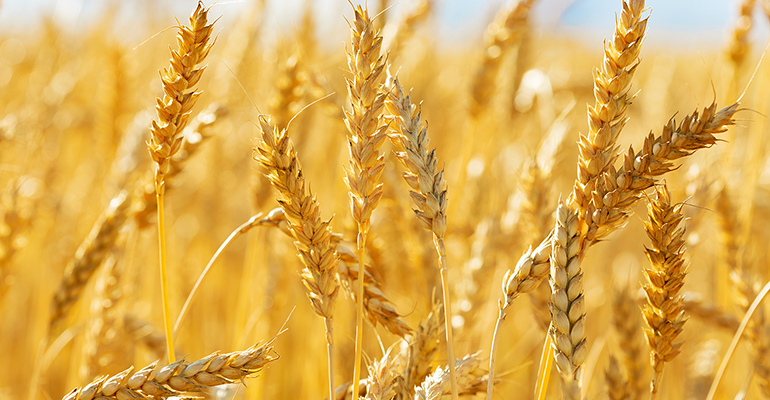The global volume of food wastage is estimated at 1.3 billion tonnes of edible primary products, according to statistics from the United Nations’ Food and Agriculture Organization (FAO), while the carbon footprint of food waste is around 3.3 billion tonnes of greenhouse gases every year.
The environmental benefits of reducing primary food waste are clear. However, food manufacturers and suppliers are also looking beyond primary produce and finding ways to add value to their agri-food co-streams, which are often full of unutilized nutrients.
Comet Bio upcycles wheat straw, soy husks, corn stover, leaves and other biomass, and currently has two upcycled ingredients in its portfolio: Arrabina, a prebiotic arabinoxylan dietary fibre, and Sweeterra, a dextrose sweetener. Its process is based on three steps involving steam activation, water extraction and purification to release valuable components that are locked within the plant structure.
“Our approach is simple yet revolutionary,” Rich Troyer, CEO of Comet Bio told Fi Global Insights. “We’ve utilized equipment well known in other industries like pulp and paper and applied it to the food industry.”
Commercialising arabinoxylan is now possible
Arabinoxylan is made from hemicellulose, which can be found in a variety of sources ranging from spent brewer’s grain to wheat stalks. Although it has a host of functional and nutritional benefits, uptake of this fibre has been heretofore limited because of inefficient extraction technologies. Comet Bio claims its patent-protected process reverses this supply problem.
“Arabinoxylan is naturally occurring in the cell walls of many plants and has been well known in the nutrition community,” said Troyer. “However, extracting it in a soluble form has been difficult and expensive. But our approach, using water and pressure, produces a pure, highly soluble arabinoxylan at a cost point that makes wide commercialisation possible.”
Made from organic and non-GMO crop residue, Arrabina is isolated, purified, and available in a fully soluble powder form. It can be used to reduce the sugar content of chocolate confectionery or boost the fibre in bars, baked goods, and beverages, and may also allow brands to tap into the current trend for gut health.

According to clinical studies conducted by Comet Bio, 3.4 grams of Arrabina helps maintain healthy blood glucose levels, support immune health and promote the growth of beneficial bifidobacteria in the gut without causing bloating or gut discomfort associated with other prebiotics. The fibre has generally recognised as safe (GRAS) status in the US and a novel food application pending in the EU.
The company, which has a raft of patents protecting its technology, has spent more than 30 years finetuning its manufacturing process but recently discovered how to further improve its arabinoxylan production.
“We have recently learned how to adjust the operating conditions of our propriety extraction technology to get to the exact product specifications that we want,” Troyer said. “There is a molecular weight range within arabinoxylan that you can fine tune to deliver different health benefits. There are interesting things we can do to adjust the process to produce different specs of arabinoxylan, such as a lighter colour product or a more potent immunity product.”
Minimising food waste, maximising profit margins
Comet Bio has two sources for its raw materials: leftover co-streams from food manufacturing, such as spent grains and wheat bran, and crop residue that is left over after the harvest, such as wheat straw and soybean hulls.
“[This] help food companies minimize food waste and maximize their profit margins by no longer letting these valuable materials go to waste, but instead turning them into unique and sustainable ingredients,” said Troyer. “It also benefits farmers by fully utilizing their whole harvest, providing a new revenue stream while reducing food waste.”
“This partnership also benefits farmers by allowing them to profit from their whole harvest while ensuring the highest quality for our ingredients. With this approach, we not only close the loop on the food system but also reduce its carbon footprint,” Troyer added.
On the up: Growing demand for upcycled foods
Comet Bio recently performed its own consumer research study and found that 42% of consumers believe reducing food waste is a reason to purchase healthy and sustainable products, while the Upcyled Food Association predicts that demand for upcycled products could become as important a trend as organic certification in the coming decade.
The opportunities in upcycling are huge, from transforming cocoa pod husks into edible cutlery for ice-cream to upcycling wine lees to a polyphenol-packed powder or using nutrient-packed spent brewers’ grain for healthy cereal bars.
Comet Bio’s manufacturing process has attracted attention within the food and drink industry, and it was recently selected by Anheuser-Busch InBev to take part in the 100+ Accelerator programme. AB InBev, the world’s largest brewery, is interested in applying the technology to spent brewer’s grain. Through the programme, Comet Bio receives support, mentoring and funds to incubate, experiment and scale up its proposition.
“The future starts today by collaborating with visionary companies like Comet Bio,” said Maisie Devine, global director for sustainability investments & accelerator at AB InBev, at the time.


